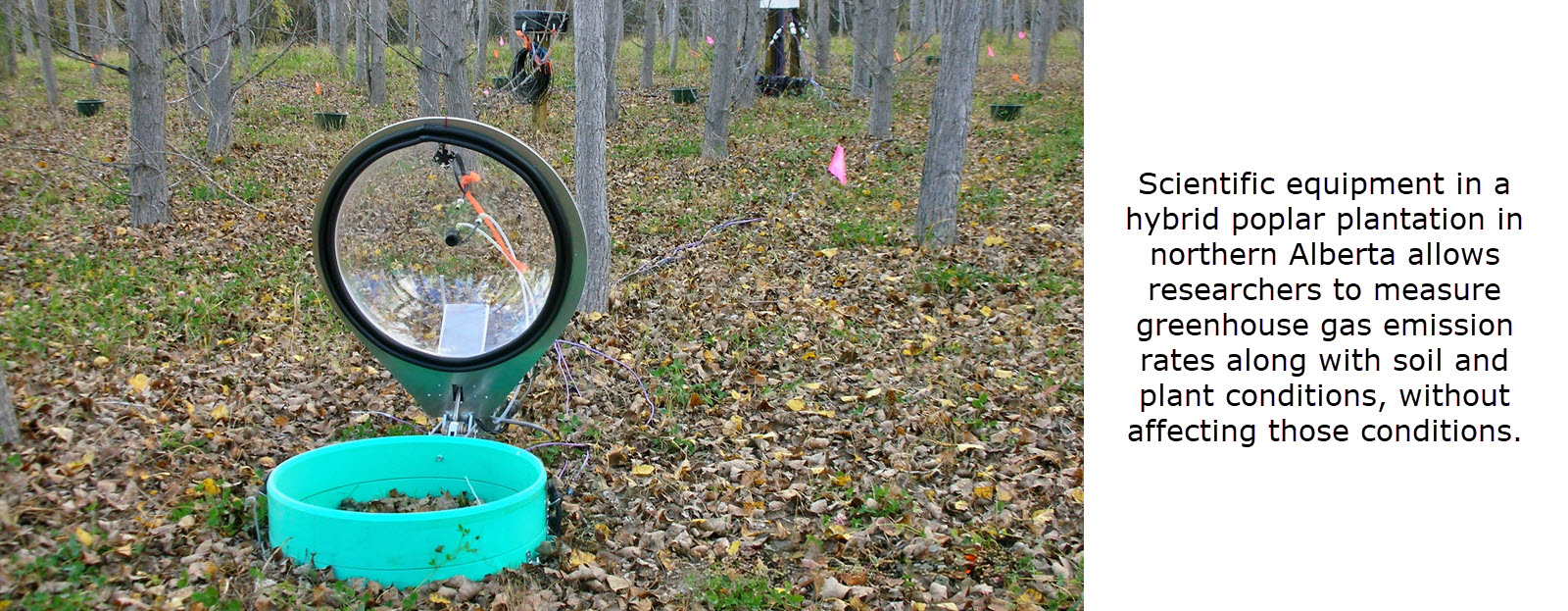University of Alberta study reveals pulp mill waste enhances soil fertility and reduces greenhouse gases.
Over two years, researchers experimented with hybrid poplar tree plantations in northern Alberta, discovering that pulp mill waste, also known as biosolids, can significantly improve soil health when used alongside conventional fertilizers.
Traditionally, the pulp and paper industry's waste has been a challenge to manage, often ending up in landfills. However, this study, led by Professor Scott Chang, shows that repurposing biosolids as organic fertilizer not only benefits soil fertility but also plays a crucial role in reducing greenhouse gas emissions.
Conventional fertilizers, typically containing industrially produced urea, are known to stimulate emissions of nitrous oxide, a potent greenhouse gas. The study compared the effects of biosolids, conventional fertilizer, and their combination on soil emissions and properties.
It found that while conventional fertilizer alone increased soil carbon dioxide and nitrous oxide emissions significantly, the addition of biosolids curbed these emissions.
Interestingly, when biosolids were used in conjunction with conventional fertilizer, there was a surprising reduction in soil carbon dioxide emissions. This suggests that biosolids may initially absorb soil nitrogen and then act as a slow-release fertilizer, moderating the impact on greenhouse gas emissions.
Beyond emission control, biosolids also enhanced soil quality, increasing levels of dissolved organic carbon and microbial biomass. These elements are crucial for nutrient release and carbon cycling, essential for plant growth.
The study highlights the critical role of soil microorganisms in regulating greenhouse gas emissions and suggests that targeting specific microbes could mitigate the negative effects of conventional fertilization.
This research offers a dual benefit: managing pulp mill waste effectively and improving agricultural sustainability. It's a step forward in developing environmentally friendly farming practices, crucial in the face of global climate challenges.
Photo caption and credit: Scientific equipment in a hybrid poplar plantation in northern Alberta allows researchers to measure greenhouse gas emission rates along with soil and plant conditions, without affecting those conditions. University of Alberta.
Related Articles
- Precision Technology for Fertilizer Mixing & Blending Precision agriculture is everywhere, even in fertilizer mixing and blending systems, where automated systems and software-based systems are quickly becoming a crucial element to the industry. (Sponsored Content) N...
- Viterra offer ratified On Friday, January 19, Viterra Canada announced that its revised offer to the Grain and General Services Union (GSU) Locals 1 and 2, representing 436 employees across Saskatchewan and the Regina office had been ratif...
- Canadian Foodgrains Bank and Viterra fighting against hunger Canadian Foodgrains Bank, together with Viterra and its volunteer farmers, marks the eighth year of their joint efforts to tackle global hunger, utilizing farmland across Saskatchewan and Alberta. As reported on F...
- Will South American crops survive? Even with the flag of Brazil covered in soybeans, the dryness experienced within the Amazon rainforest is having a negative affect on the country’s corn and soy yield. By Colin McNaughton, Farms.com Risk Managemen...
- Perception gaps exist between farmers and consumers Research by Nutrien identifies key differences and similarities in agricultural views between farmers and North American consumers. In recent research by Nutrien Ltd, "Bridging the Agricultural Perception Divide,"...
 How to resolve AdBlock issue?
How to resolve AdBlock issue? 


Join the discussion...
You must be logged in as a CAAR member to comment.
Report
My comments